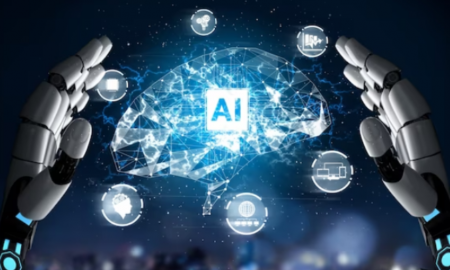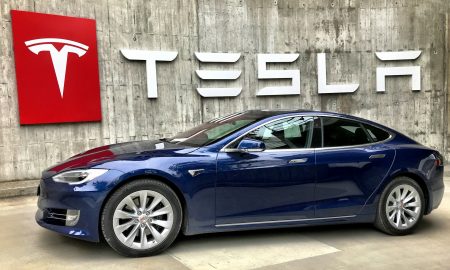
What Is Generative AI vs AI – And How Do They Differ?

Let’s peel back the layers and discover what makes them tick.
What is Traditional AI?

Freepik | our-team | Traditional AI focuses on specific tasks such as data analysis and automated processing.
Traditional AI, often referred to as Narrow or Weak AI, operates within predefined parameters and algorithms. Unlike its generative counterpart, Traditional AI excels at specific tasks programmed by developers. This AI type is proficient in tasks such as data analysis, predictive modeling, and automated decision-making. Examples include chatbots for customer service and algorithms for fraud detection in financial transactions.
Here’s what defines traditional AI:
- Preprogrammed Solutions: Relies on preset algorithms for task execution.
- Narrow Applications: Designed for specific functions like data analysis and automated processing.
- Limited Learning: Dependent on predefined data sets for learning and decision-making.
Exploring Generative AI

Freepik | Generative AI is used in creative fields like content creation, design, and scientific research.
In stark contrast, Generative AI showcases a more versatile approach to artificial intelligence. This type of AI leverages machine learning models like Generative Adversarial Networks (GANs) and Variational Autoencoders (VAEs) to generate new content based on existing data and human inputs, often referred to as prompts.
Unlike Traditional AI, which focuses on predefined tasks, Generative AI is employed in creative fields such as content creation, design, and even scientific research.
Here are the hallmarks of generative AI:
- Creative Output: Capable of producing new and original content like text, images, and music.
- Adaptive Learning: Utilizes machine learning to predict and generate content based on analyzed data.
- Broad Applications: Extensively used across diverse industries for creative tasks and problem-solving.
What is Generative AI vs AI – Key Differences

Freepik | Traditional AI focuses on tasks such as spam filtering, fraud detection, and recommendation systems.
So, which type of AI reigns supreme? The answer, like most things in life, isn’t so black and white. Traditional AI remains an invaluable tool for specific tasks requiring meticulous analysis and precise execution. On the other hand, generative AI unlocks a whole new world of creative possibilities.
Here’s a breakdown of the key differences:
Focus and Output:
- Traditional AI – Analyzes data, identifies patterns, and excels at specific tasks.
- Generative AI – Creates entirely new content based on data and human prompts.
Applications:
- Traditional AI – Spam filtering, fraud detection, recommendation systems.
- Generative AI: Content creation (writing, music, images), product design, personalized experiences.
Transparency:
- Traditional AI – Decisions are often based on predefined rules, making them easier to understand.
- Generative AI – The complex nature of its learning algorithms can make it challenging to pinpoint how it arrives at specific outputs.
The Future of AI
The intersection of generative AI vs. traditional AI holds immense intrigue and potential. While traditional AI remains a stalwart in data analysis and problem-solving, generative AI stands poised to redefine creativity by generating novel solutions and experiences. This synergy between the two promises a future where boundaries blur, and both types of AI collaborate to revolutionize our world.
Indeed, what is generative AI vs AI signifies not just a contrast in capabilities but a dynamic partnership shaping the transformative journey of AI’s evolution.
More in Tech
-
`
What is Business Administration and What Opportunities Does it Offer?
In today’s bustling world of commerce and industry, the term “business administration” often looms large, yet its true essence remains shrouded...
May 22, 2024 -
`
What is AI? Exploring the World of Artificial Intelligence
In today’s rapidly evolving technological landscape, the term “Artificial Intelligence” (AI) has become a buzzword that sparks curiosity, speculation, and even...
May 16, 2024 -
`
How Many Jobs Are Available in Real Estate Investment Trusts? Exploring Career Opportunities
Are you seeking a career path with a blend of financial savvy and a knack for the real estate market? Look...
May 9, 2024 -
`
The Staggering Net Worth of the Richest Podcaster Joe Rogan in 2024
Joe Rogan has become a household name, largely due to his immensely popular podcast, “The Joe Rogan Experience.” With a blend...
April 29, 2024 -
`
What Are Routing Numbers & Do Credit Cards Have One?
When managing your finances, understanding the various numbers and terms associated with your bank accounts and credit cards is crucial. A...
April 24, 2024 -
`
Tesla Stock: Let’s Address the Elephant in the Room
Why is Tesla stock dropping? This is the million-dollar question that has been on the minds of investors and enthusiasts alike...
April 16, 2024 -
`
Bearer Bonds: Definition, How They Work & Are They Valuable?
Bearer bonds are unique securities that have a colorful history and a distinctive way of functioning that sets them apart from...
April 10, 2024 -
`
Is Gwen Stefani Pregnant? How True Are the Rumors?
The rumor mills are churning once again. But this time, the spotlight is on none other than Gwen Stefani. The buzz?...
April 2, 2024 -
`
The American Express Centurion Lounge | Here’s How the Ultra-Rich Travel in Luxury
In 2024, certain American Express cardholders have a secret weapon against the airport frenzy: The American Express Centurion Lounge. This luxurious...
March 26, 2024















You must be logged in to post a comment Login